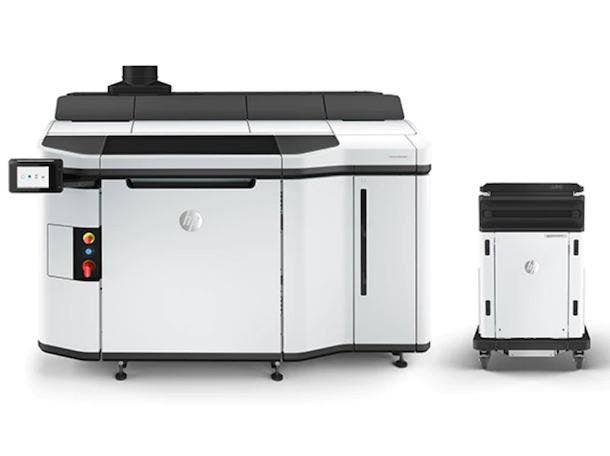HP Launches Jet Fusion 5200 3-D Printer For Higher Production Volumes
The 3-D printing system includes advances in accuracy and offers ‘breakthrough economics,’ HP says.

HP Inc. has debuted a new 3-D printing system aimed at customers seeking to do volume production of plastic parts, which the company says includes major advances in accuracy and economics.
The new system, the Jet Fusion 5200, joins HP's other plastics 3-D printers—the Jet Fusion 4200 Series (for short runs and production) and the prototyping-focused Jet Fusion 500 and 300 Series.
[Related: 10 Hottest 3-D Printer Systems To Watch In 2019]
HP has also unveiled a metal 3-D printing system, the MetalJet, although it won't be released until 2020.
The Jet Fusion 5200, on the other hand, is available now. The new 3-D printing system will be available through HP channel partners and will fall under the existing Jet Fusion channel program, the company said.
Tom Moon, vice president of HP 3DP sales for ImageNet Consulting, an Oklahoma City, Okla.--based Premier partner of HP, said HP is seizing on a "massive opportunity" to further shake up the manufacturing world with the Jet Fusion 5200.
"This new printer is able to get us very competitive with plastic injection molding," Moon said, referring to the most common method for manufacturing large volumes of plastic parts. "That's exciting. That's when you're starting to disrupt people having to do injection molding.”
For printing small-size parts, the Jet Fusion 5200 could achieve the break-even point of making more economic sense than injection molding for producing more than 100,000 parts, said Ramon Pastor, vice president and general manager for HP's Jet Fusion 3-D printer business, in a briefing with reporters.
The 5200 is ideal for manufacturing environments that are producing more than 200 parts per week, HP said.
Advantages of the Jet Fusion 5200 Series include accuracy and repeatability comparable to that of injection molding, along with the use of machine learning for improved process controls, Pastor said.
The fact that the 5200 Series is "incredibly accurate" is among the most crucial advances, Moon said.
"No other printer on the market can achieve this kind of accuracy," Moon said. “So it's a big deal, especially for people doing precision production.”
The Jet Fusion 4200 has been generating solid sales at ImageNet, Moon said, and he expects to see strong demand for the 5200, as well.
Along with the Jet Fusion 5200 3-D printer, the system works with a separate build unit, cooling unit and processing station.
The Jet Fusion 5200 Series will be available in several models—the 5200, 5210 and 5210 Pro—depending on what level of production is sought, Pastor said.
HP is not releasing pricing information for the Jet Fusion because it will vary significantly by geography and how many build units are included, Pastor said. But the system will offer "breakthrough economics" when it comes to manufacturing, he said.
HP is also introducing new materials that will be available for printing with the Jet Fusion 5200, including a thermoplastic polyurethane developed by BASF, which is aimed at producing flexible and elastic parts.
Meanwhile, HP unveiled an expanded partnership with Siemens around delivering an "end-to-end" additive manufacturing solution combining the 5200 3-D printing system with Siemens' Digital Enterprise software.